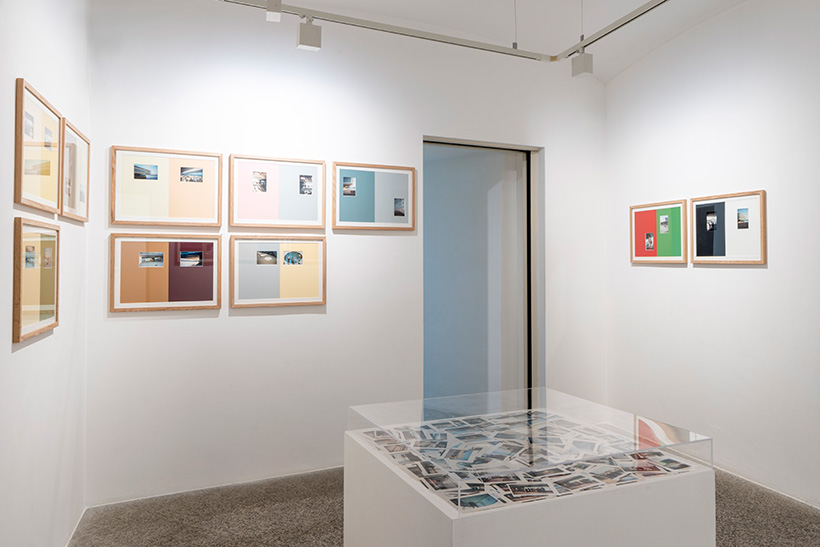Curated by Walter Guadagnini and Giangavino Pazzola
Coordinated by Elisabetta Masala
The MAN Museo d’Arte della Provincia di Nuoro and the Galleria Comunale d’Arte di Cagliari are pleased to present Minor Islands. Photographic Notes from 1990 to Today, a major photographic exhibition bringing together sixteen projects by international artists on the theme of representing the island from the beginning of the new century to the present day.
Scheduled to open on 26 June in Cagliari and 27 June in Nuoro, the exhibition project focuses not only on the geographical dimension, but also on the cultural and social aspects of the concept of insularity. It is curated by Walter Guadagnini and Giangavino Pazzola, featuring photographic works by Jacopo Benassi, Paola De Pietri, Charles Freger, Ralph Gibson, Mimmo Jodice, Salvatore Ligios, Bernard Plossu, Marinella Senatore, Giovanna Silva, Massimo Vitali, Lorenzo Vitturi, Vanessa Winship and George Georgeou (in Nuoro); Arianna Arcara, Francois Xavier Gbré, Luca Spano and Karla Hiraldo Voleau (in Cagliari).
Photographed in the past by renowned figures such as August Sander, Henri Cartier-Bresson, Lisetta Carmi and many others, Sardinia has largely been interpreted and depicted through a reportage-style lens, with a focus on its landscapes and the communities of its interior regions. These visual accounts have contributed to a social imagery marked by a polarization between the central state and the periphery, shaping representations, myths and ideologies that have, over time, influenced both how islanders perceive themselves and how Sardinia is viewed by outsiders. The stereotypical perception oscillated between an image of Sardinia as a place suspended in time – a kind of Eden – and a contrasting vision tainted by the equally exoticized presence of bandits from crime reports, remote hinterlands and other references associated with underdevelopment.
The exhibition highlights how this representation has evolved over the past twenty-five years, marked by an expanded visual exploration that embraces new ways of engaging with both the territory and its communities. The emerging symbolic and ideological portrayals of the island’s space provide an insight into a range of themes, from cultural histories to the transformation of contemporary society, while also revealing glimpses of persistent subordination. By turning their gaze to the coastline and the sea, as well as to the interiors of the island’s larger urban centres, artists have developed a visual vocabulary of Sardinia that situates it culturally within the broader Mediterranean context, prior even to its placement within the Italian one.
The exhibition opens with a prologue-tribute to four distinguished photographers who, over the years, have devoted significant works to Sardinia, both as part of their own artistic journeys and through their reinterpretations of the island’s landscape. Mimmo Jodice’s marine metaphysics, rooted in Mediterranean culture and captured at Punta Pedrosa (1998) and Molara (1999); Bernard Plossu’s poetic wanderings between Carloforte and La Maddalena (2002); Ralph Gibson’s ironic reimagining of the nude (1986); and Massimo Vitali’s striking documentation of the tourist presence on beaches such as Poetto (1995) collectively introduce the viewer to the exhibition and to a new century.
Divided into monographic rooms, the exhibition at the MAN in Nuoro presents photographers who interpret contemporary life through a range of thematic lenses. These include the enduring role of masks in ancient traditions and rituals, revisited by Salvatore Ligios (2007) to explore questions of identity and the erosion of local culture, and by Charles Fréger (2010–2011); the eternal – and often futile – anticipation of social, cultural and economic renewal, exemplified by the inauguration of architectural structures for the aborted G8 summit in La Maddalena (Giovanna Silva, 2009); and the dialogue between past and present in the Monument to Garibaldi and the granite fortifications on Caprera island (Paola De Pietri, 2022). Practices of interaction and participation between art and community emerge in the exploration of diverse notions of citizenship, as seen in the works of Marinella Senatore (2013), Vanessa Winship and George Georgiou (2014). Meanwhile, Jacopo Benassi (2021) and Lorenzo Vitturi (2022) address the concept of isolation through their respective projects in Donori and Valle della Luna.
At the Cagliari venue, four photographers united by a shared interest in the interplay between photography and literature offer further interpretations and formal articulations of themes such as interpersonal relationships. Their work engages with the narratives of Sergio Atzeni; the previously unpublished project by Arianna Arcara (2025); and Karla Hiraldo Voleau’s exploration of Generation Z, reimagined through the lens of Pasolini’s legacy of Comizi d’amore (2023). Meanwhile, Luca Spano’s world-building (2020–2021), positioned between imagination and documentation, draws inspiration from the literary journey of D. H. Lawrence. The theme of travel and a renewed interpretation of the territory is explored in the work of François-Xavier Gbré, whose images reveal the evolving social and economic landscape shaped by migration and its far-reaching consequences.
The exhibition presents works of extraordinary visual quality and offers new perspectives on familiar places, opening up a range of reflections on the many themes raised by the works on display. It is accompanied by a bilingual catalogue published by Interlinea, containing a dialogue between the two curators, reproductions of the works on display and biographical and critical notes on the artists included in the exhibition project.
Galleria comunale d’arte di Cagliari
Largo Giuseppe Dessì | Viale San Vincenzo 2 – 09123
Tel. +39.070.6776454
Opening times: 10:00 – 20:00
(closed on Mondays)
museicivici@comune.cagliari.it
MAN_Museo d’arte provincia di Nuoro
Via Sebastiano Satta 27 – 08100 Nuoro
Tel. +39.0784.252110
Opening times: 10:00 – 20:00
(closed on Mondays)
Press Office
STUDIO ESSECI – Sergio Campagnolo
Via San Mattia 16, 35121 Padova
Tel. +39.049.663499
contact person Simone Raddi, simone@studioesseci.net
www.studioesseci.net

